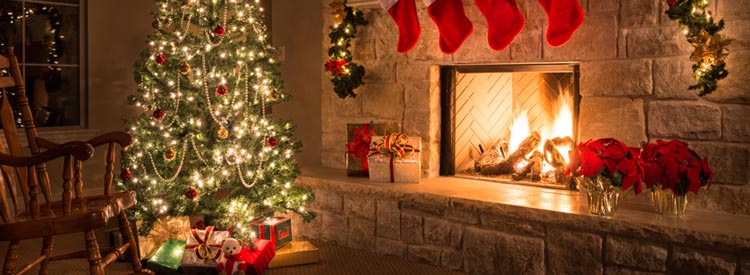Winter Safety Tips: How to Prepare Your Home, Car and Life for the Cold

Getting ready for winter means getting ready for winter storms, cold temperatures, and a variety of other hazards unique to winter. We all need to prepare our homes, cars, and even our bodies for staying safe in the colder weather and all of the perils it brings.
Check out these tips for winter safety in all areas of your life:
Winterize Your Home
- Clean out gutters.
- Repair roof leaks.
- Install weather stripping, insulation, and storm windows.
- Have your heating system professionally serviced to make sure that it is clean, working properly, and ventilated to the outside.
Winterize Your Car
- Service the radiator and check the antifreeze level.
- Check your tire treads and replace worn tires with all-weather or snow tires.
- Always keep your gas tank full in colder temperatures to avoid ice in the tank and fuel lines.
- Use winter formula in your windshield washer.
- Prepare a winter emergency kit to keep in your car in case you become stranded in the cold and snow.
Winter Severe Weather Preparation
- If a winter storm is coming, stock food that needs no cooking or refrigeration and store water in clean containers.
- Prepare and maintain an emergency kit that includes battery-operated flashlights, a weather radio, and other sources of light.
- Make sure you have batteries, a first aid kit, medications, and essential baby and pet items on hand.
Winter Outdoor Activity Preparation
- Wear appropriate clothing including layers of light warm clothing, mittens, hats, scarves, and waterproof boots.
- Be aware of the wind chill factor, not just the temperature, and perform outdoor chores slowly and carefully.
- When you are participating in outdoor recreation in winter, carry a cell phone and take a buddy and an emergency kit with you.
Winter Travel Safety
- Be aware of current and forecasted weather conditions.
- Avoid traveling when the weather service has issued winter travel advisories.
- If you must travel in inclement weather, inform another person of your route and when you plan to arrive at your destination.
- If you become stranded in your car:
- Stay with your car unless safety is no more than 100 yards away.
- Continue to move your arms and legs.
- Stay visible by putting bright cloth on the antenna of your vehicle and turning on the inside overhead light.
- Run the engine and the heater only 10 minutes every hour.
- Keep a downwind window open.
- Make sure your tailpipe is not blocked.
With careful preparation and a little extra effort, you can make sure you enjoy the joy and majesty of winter safe, sound, and warm.
Winter Home Maintenance Projects You Can’t Forget
Cold weather, ice, snow, and wind can all wreak havoc on your home. Every homeowner must maintain his or her home in winter in order to avoid costly damage and reduce the chance of having to file a home insurance claim. Many of these tasks may seem simple, so simple that maybe you’ll forego them or forget about them altogether. But they can go a long way toward preventing damage to your home during winter.
- Inspect heating ducts and vents regularly.
- Change the air filter in your furnace every three months.
- Check all window and exterior doorframes or cracks or drafts. Seal cracks with caulk, weather stripping or door sweeps. Install plastic sheeting over your windows if necessary for added energy efficiency.
And remember, if you plan to leave home for an extended period of time during the winter, be sure to turn off your water and keep the home warm enough to prevent freezing pipes, which can be an extremely messy and costly disaster!
Burst pipes can cause flooding, structural damage to your home, mold, and a lot of headaches for you and your family. According to the American Red Cross, pipes that freeze most often are those that are exposed to severe cold, like outdoor hose bibs, swimming pool supply lines, water sprinkler lines, and water supply pipes in unheated interior areas like basements, crawl spaces, attics, garages, or kitchen cabinets. In addition, pipes that run against exterior walls or have poor insulation are also more susceptible to freezing in cold weather.
There are three main causes of frozen pipes: quick temperature drops, insufficient insulation, and keeping your thermostat set too low. While frozen pipes can happen if you are not diligent while you are at home during the winter months, it is extremely important that you take precautions to avoid frozen pipes before you leave your home for any significant amount of time in the winter.
Whether it is a weekend away or an extended vacation, the weather can change quickly and unexpectedly in the winter and your furnace can fail at any time. You could come home to frozen pipes or burst pipes and a serious (and expensive) problem if you don’t prepare your home before you go.
Before the Cold Weather Sets in:
- Drain water from swimming pool and sprinkler supply lines.
- Remove, drain, and store any hoses used outside, then close the valves that supply water to the outdoor faucets and hose bibs. Drain water from outdoor faucets and hose bibs, but keep the outside valve open so water that remains in the pipe can expand without bursting the pipe.
- Before the cold weather sets in, be sure that your pipes are properly insulated. Seal leaks that allow cold air inside near where pipes are located.
After the cold sets in, continue to keep your home and pipes properly heated and remain diligent during periods of extreme cold.
- If you have water supply lines in the garage, keep the garage doors closed as much as possible in cold weather.
- Keep your home’s thermostat set to the same temperature during the day and at night. Setting it too low at night could leave your pipes vulnerable to freezing overnight.
- During periods of extreme cold, let a trickle of warm water drip overnight. This small flow of water through the system will help to keep your pipes from freezing.
- Open cabinet doors to allow heat to filter in to pipes that are under sinks and toward appliances that are near exterior walls.
Will Insurance Cover Household Items that Break during the Winter?
Winter home damage can be caused by a variety of problems, from severe weather to simple wear and tear. The cause of any broken or possessions or structural elements of your home is the answer to when and how it will be covered by your home insurance. Sudden, accidental damage is typically covered, while regular maintenance issues are not. Here’s how:
The dwelling coverage portion of your home insurance policy protects your home’s structure from a variety of “covered perils,” or causes of loss. Typical covered perils include fire, hail, weight of snow or ice, and so on. So if your roof leaks after a heavy snowstorm damages it, your policy would likely cover the necessary repairs.
If any of the contents of your home are damaged or destroyed because of that same roof leak, the personal property coverage portion of your home insurance policy would pay for repairing or replacing damaged possessions.
A wide range of perils are covered by home insurance, including many that can be caused by winter snow or freezing temperatures. Again, using a roof leak as an example, if your roof leak were caused by one of the following, your repairs would likely be covered:
- Fire or lightning
- Windstorms and hail
- Explosions
- Riot or civil commotion
- Aircraft
- Vehicles
- Smoke
- Vandalism and malicious mischief
- Theft
- Volcanic eruption
- Falling objects
- Weight of ice, snow, or sleet
- Accidental discharge or overflow of water from within a plumbing, heating, air-conditioning or automatic fire protective system, or from within a household appliance
- Sudden and accidental tearing apart, cracking, burning or bulging of a steam of hot water heating system, an air-conditioning or automatic fire protective sprinkler system, or an appliance for heating water
- Freezing of a plumbing, heating, air-conditioning system, automatic fire protective sprinkler system, or of a household appliance
- Sudden and accidental damage from artificially generated electrical current
Be sure to review your homeowners insurance policy to understand what is and is not covered.
Decorate for the Holidays Safely

Everyone loves holiday decorations! The lights, the candles, the paper and the greenery all add to the spirit of the season. But holiday decorations can also pose some serious risks to our homes if we are not careful.
The U.S. Consumer Product Safety Commission warns of the dangers of holiday decorations, and what we can do to minimize the risk. Here are just a few of their holiday decoration safety tips.
Candles
- Never use lighted candles to decorate a Christmas tree or near any other evergreens or flammable materials.
- Make sure all candleholders are non-flammable.
- Place candles out of the reach of children and pets, and where they cannot be knocked down or blown over.
Christmas Trees
- Use non-combustible or flame resistant tree trimmings.
- If you have an artificial tree, make sure it is labeled as fire resistant.
- If you have a natural tree, make sure it is fresh. Look for needles that are hard to pull from the branches, and a trunk butt that is sticky with resin. When the trunk of the tree is bounced on the ground, few needles should fall off.
- Place your Christmas tree away from fireplaces, radiators and other sources of heat.
- Cut off about two inches of the trunk before placing the tree in the tree stand. Keep the tree stand filled with water at all times.
Christmas Lights
- Use only lights that are labeled as having been tested for safety.
- Check each set of lights, new or old, for broken or cracked sockets, frayed or bare wires, or loose connections. Discard damaged light sets.
- Fasten outdoor lights securely to avoid wind damage.
- Use no more than three strands of lights per single extension cord.
- Turn off all lights and other electric powered decorations before going to bed or leaving the house.
- Never use electric lights on a metallic tree.
https://www.cpsc.gov/Newsroom/News-Releases/2005/CPSC-Announces-Holiday-Season-Decorating-Safety-Tips
https://www.redcross.org/get-help/how-to-prepare-for-emergencies/types-of-emergencies/winter-storm/frozen-pipes.html
